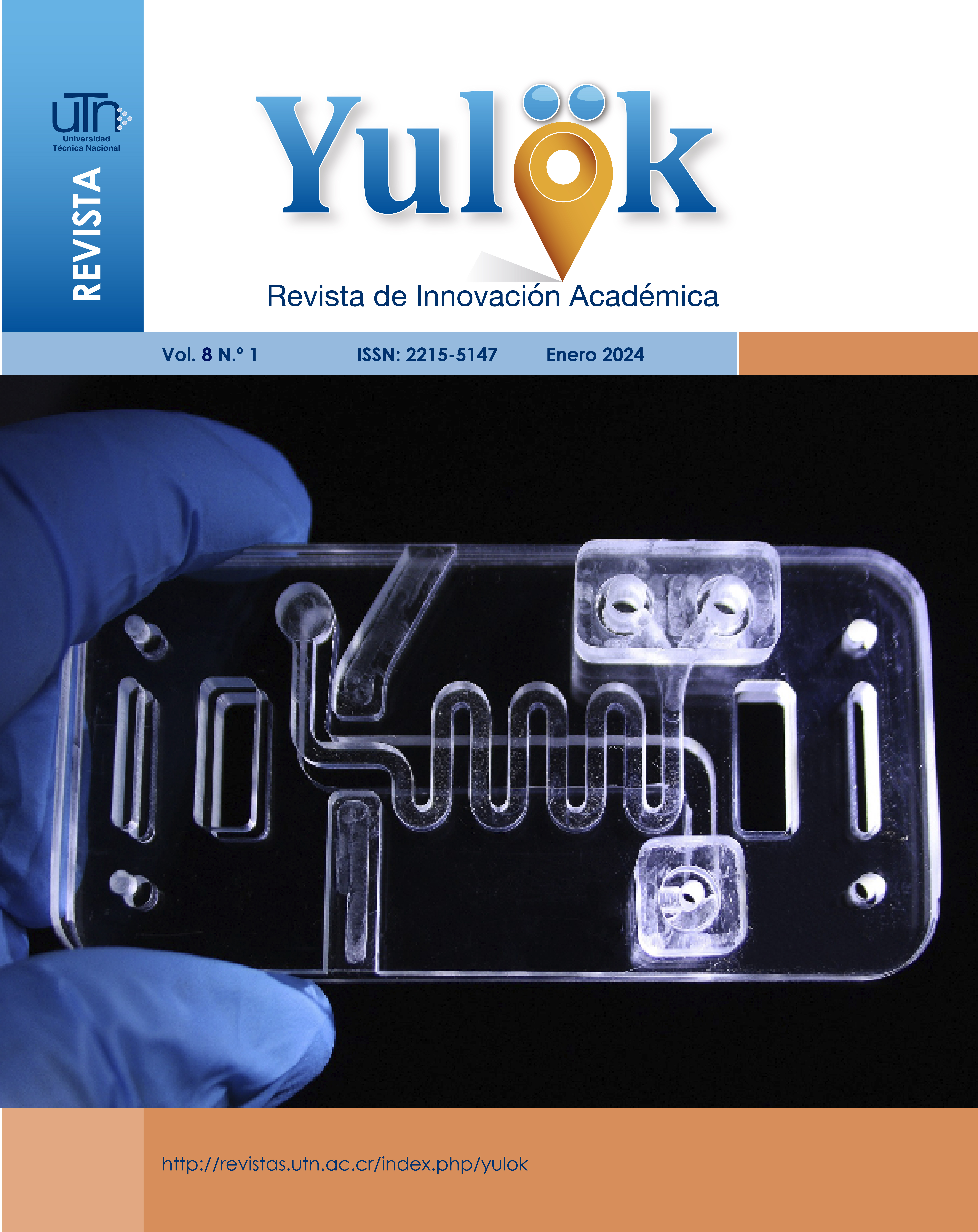Public Service Innovation: Data-driven Management, Productive ecosystems, Driving Sectors and the Optimizer
Main Article Content
Abstract
This article aims to understand the requirements of productive ecosystems and identify key elements for the emergence and success of companies or sectors in specific regions, seeking an efficient use of each area by contrasting it with the characteristics of regions and communities, identifying areas conducive to sectoral development. It also addresses the implementation of public policies, prioritizing the "rescue of talent" as a catalyst for broader positive effects, including innovation and sustainable development. The methodology used includes an exhaustive literature review to understand previous treatments of productive ecosystems. The Optimizer of Productive Ecosystems (Opt-EP), a Monte Carlo-based heuristic algorithm that identifies productive activities with high potential and impact in a region, is presented. The results present Opt-EP as an advanced artificial intelligence tool specialized in analyzing the "Productive DNA" of regions. Using heuristic algorithms, Opt-EP delves into socio-economic, cultural, environmental, and economic dynamics, decomposing measurements to obtain a more detailed view. The integration of the Productive DNA concept provides a solid basis for designing public policies tailored to the unique characteristics of each region, underscoring the importance of identifying and nurturing the intrinsic capabilities of each area to achieve authentic and sustainable economic development.
Article Details

This work is licensed under a Creative Commons Attribution-NonCommercial-ShareAlike 4.0 International License.
Todos los artículos publicados están protegidos con la licencia Creative Commons Atribución-NoComercial-CompartirIgual 4.0 Internacional
![]()
How to Cite
References
Altamirano, S. E. C., Zepeda, F. J. R., & Ceja, E. S. (2016). Cadenas productivas y cadenas de valor. EDUCATECONCIENCIA, 10(11).
Carayannis, E.G., Barth, T.D. & Campbell, D.F. The Quintuple Helix innovation model: global warming as a challenge and driver for innovation. J Innov Entrep 1, 2 (2012). https://doi.org/10.1186/2192-5372-1-2
Challet, D., Pluchino, A., Biondo, A. E., & Rapisarda, A. (2020). The origins of extreme wealth inequality in the talent versus luck model. Advances in Complex Systems, 23(02), 2050004.
Cobben, D., Ooms, W., Roijakkers, N., & Radziwon, A. (2022). Ecosystem types: A systematic review on boundaries and goals. Journal of Business Research, 142, 138-164. https://www.sciencedirect.com/science/article/pii/S0148296321009607
Deboeck, G., y Kohonen, T. (2013) Visual explorations in finance: with self-organizing maps. Springer Science & Business Media.
Durán Lima, J. E., & Banacloche, S. (2021). Análisis económicos a partir de matrices de insumo-producto: definiciones, indicadores y aplicaciones para América Latina.
Gallego, J. A. (2017). La pólis griega: orígenes, estructuras, enfoques.
Gañán de Molina, C. (2022). La conformación de territorios inteligentes a partir de enfoques de especialización basados en la cooperación y las redes.
Herrera, F., Lozano, M., y Verdegay, J. (1995) “Algoritmos genéticos: Fundamentos, extensiones y aplicaciones”, Arbor, pp. 9.
Heskes, T. (1999) “Energy functions for self-organizing maps”, Kohonen maps, pp. 303—316.
Horta, R. y Serrano, M. (2008) Construyendo un Índice de Competitividad para la Economía Uruguaya. Recuperado de: https://ucu.edu.uy/sites/default/files/facultad/fce/i_competitividad/construyendo-un-indice-de-competitividad.pdf
Iansiti, M., & Levien, R. (2004). Keystones and dominators: Framing operating and technology strategy in a business ecosystem. Harvard Business School, Boston, 3, 1-82. https://www.profligategrace.com/documents/Grant/Iansiti_Keystones_and_Dominators.pdf
Iglesias, D. H. (2002). Cadenas de valor como estrategia: las cadenas de valor en el sector agroalimentario. La Pampa, Argentina: Estación Experimental Agropecuaria Anguil, Instituto Nacional de Tecnología Agropecuaria.
Ishida, Y (2004) Immunity-based systems: a design perspective. Springer Science & Business Media.
Kapoor, K., Bigdeli, A. Z., Dwivedi, Y. K., Schroeder, A., Beltagui, A., & Baines, T. (2021). A socio-technical view of platform ecosystems: Systematic review and research agenda. Journal of Business Research, 128, 94-108.
Kohonen, T. (1982) “Self-organized formation of topologically correct feature maps”, Biological cybernetics, pp. 59—69.
Kohonen, T. (1990) “The self-organizing map”, Proceedings of the IEEE, pp. 1464—1480.
Kosacoff, B. (2019). Los ecosistemas productivos. Visión Desarrollista. Consultado en línea en: https://www.visiondesarrollista.org/los-ecosistemas-productivos/
Nutz, N., & Sievers, M. (2016). Guía general para el desarrollo de cadenas de valor: cómo crear empleo y mejores condiciones de trabajo en sectores objetivos. Ginebra, Suiza: Organización Internacional del Trabajo.
OECD iLibrary. (2021) Productivity. Recueprado de: https://doi-org.ezproxy.sibdi.ucr.ac.cr/10.1787/0bb009ec-en
Padilla, R., & Oddone, N. (2016). Manual para el fortalecimiento de cadenas de valor.
Páez, D., Fernández, I., Basabe, N., & Grad, H. (2002). Valores culturales y motivación: creencias de autoconcepto de Singelis, actitudes de competición de Triandis, control emocional e individualismo-colectivismo vertical-horizontal. Revista española de motivación y emoción, 3, 169-195.
Parra, S. (2018) El conocimiento es el nuevo dinero: tienes que seguir aprendiendo cada día. Foro Económico Mundial. Consultado en línea en: https://es.weforum.org/agenda/2018/01/el-conocimiento-es-el-nuevo-dinero-tienes-que-seguir-aprendiendo-cada-dia?utm_content=buffere6255&utm_medium=social&utm_source=facebook.com&utm_campaign=buffer
Plutino, A., Biondo, A., & Rapisarda, A. (2018). Talent vs Luck: the role of randomness in success and failure.
PNUD (2009) Indicadores de Gobernabilidad Democrática (IGD) en el Paraguay. Recuperado de: https://www.undp.org/sites/g/files/zskgke326/files/migration/py/Indicadores-de-Gobernabilidad-Democratica.pdf
Powell, W. & Snellman, K. (2004). The Knowledge Economy. Annual Review of Sociology, 30, 199–220. http://www.jstor.org/stable/29737691
Prieto Gómez, L., González de la Rosa, M., Bulchand Gidumal, J., & García Rodríguez, F. J. (2015). Resumen divulgativo sobre la estrategia de especialización inteligente de Canarias (RIS3). Red Canarias Emplea.
Riechmann, J. (2007). ¿Cómo cambiar hacia sociedades sostenibles? Reflexiones sobre biomímesis y autolimitación. Cultura verde: ecología, cultura y comunicación. Recuperado de: https://idus.us.es/bitstream/handle/11441/97552/cultura_verde-1.pdf?sequence=1
Say, J. B. (1821). Tratado de economía política. F. villalpando.
Schowalter, T. D. (2022). Insect ecology: an ecosystem approach. Academic press.
Stewart, J. “The Distribution of Talent”, Marilyn Zurmuehlin Working Papers in Art Education 2 (1983): 21-22
Strenze, T. (2013). Allocation of talent in society and its effect on economic development. Intelligence, 41(3), 193-202.
Tanaka, M., Watanabe, H., Furukawa, Y., y Tanino, T. (1995) “GA-based decision support system for multicriteria optimization”, Systems, Man and Cybernetics, 1995. Intelligent Systems for the 21st Century., IEEE International Conference on, pp. 1556—1561.
Tsujimoto, M., Kajikawa, Y., Tomita, J., & Matsumoto, Y. (2018). A review of the ecosystem concept—Towards coherent ecosystem design. Technological Forecasting and Social Change, 136, 49-58.
Vesanto, J., y Alhoniemi, E. (2000) “Clustering of the self-organizing map”, Neural Networks, IEEE Transactions on, pp. 586—600.

